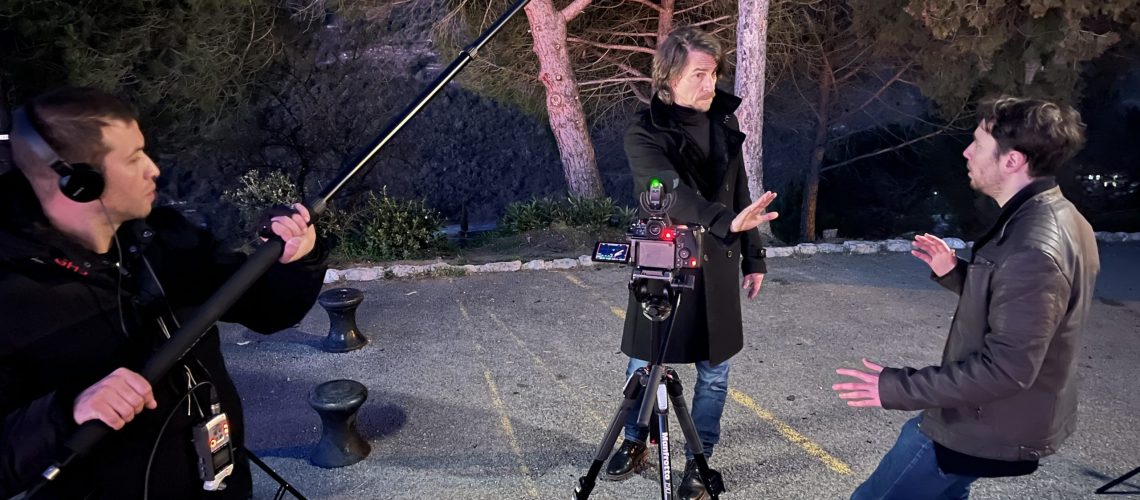The majority of people who come across corporate films on LinkedIn can’t imagine all the work that goes into them… Are you looking to hire an audiovisual production company to make your next corporate film, and wondering what a shoot is like? In this article, we’ll take you behind the scenes of a Solid Rusk Production shoot, and show you your role on the day!
Sommaire
Pre-production
Filming is the “visible” part of video production. It’s during this stage that your corporate film takes shape, the film crews go out into the field and the first rushes are created. But before filming begins, pre-production work is essential ! The success of a corporate film depends not only on a good script to guide the director, but also on meticulous organization. To set the scene for the day(s) of shooting, the project manager needs to prepare the various stages of the day in detail, so as to draw up a schedule for the day with the client. This preparatory work will also help avoid oversights on the big day.
For example, if one of the people in the video talks about working hand in hand with the marketing department, you’ll need to think about B-Roll footage, i.e. shots of him talking to marketing people. The pre-established script will provide the illustrative images that need to be planned for the day of shooting.
The little ➕: For a corporate shoot, Solid Rusk Production project managers take care to communicate to the interviewee the questions that are going to be put to him on camera, so that he can prepare his answers and be at ease on the day of the shoot.
Material preparation
A night shoot does not require the same equipment and complexities as a day shoot. The same applies whether the shoot takes place indoors or outdoors. Shooting, sound and lighting will differ not only from one location to another, but also according to the time of day!
To be efficient on the big day, the videographer needs to know what equipment he’ll need for each scene and prepare it: cameras, microphones (who’s going to speak, when and how), lights to get the desired intensity, is there going to be any action that requires the use of a stabilizer? All these elements will be calculated in advance with the customer when drawing up the specifications, so as to have the right equipment on the day of shooting.
The day of the shoot
Hardware installation
Every shooting day starts with setting up the equipment: light, image and sound.
The lighting is set up with various spotlights, reflectors and flags. The various light sources are set up according to the lighting plan defined by the director to reproduce a desired atmosphere, validated in advance by the customer. On location, our videographers don’t necessarily have access to a power supply, so they work with reflectors to use natural light.
Meanwhile, the cinematographer or cameraman installs the equipment: fixed cameras with different lenses, or mobile using a dolly system (moving via a platform on rails) or steadicam (an operator moves the camera using an electronic suspension and stabilization system), drones, etc. Once the equipment has been installed, the videographers choose the focal length, the framing, the movements, etc. Everything is planned by the director, who will have defined these parameters in advance in order to “tell” the story in a certain way.
Each technique has its advantages and disadvantages, but it’s all a matter of artistic choices and budget.
Finally, setting up the sound recording may require the installation of several microphones, which the speakers will have to be equipped with, and which will have to be hidden in the sets. Of course, it’s best to avoid the “boom in the shot”!
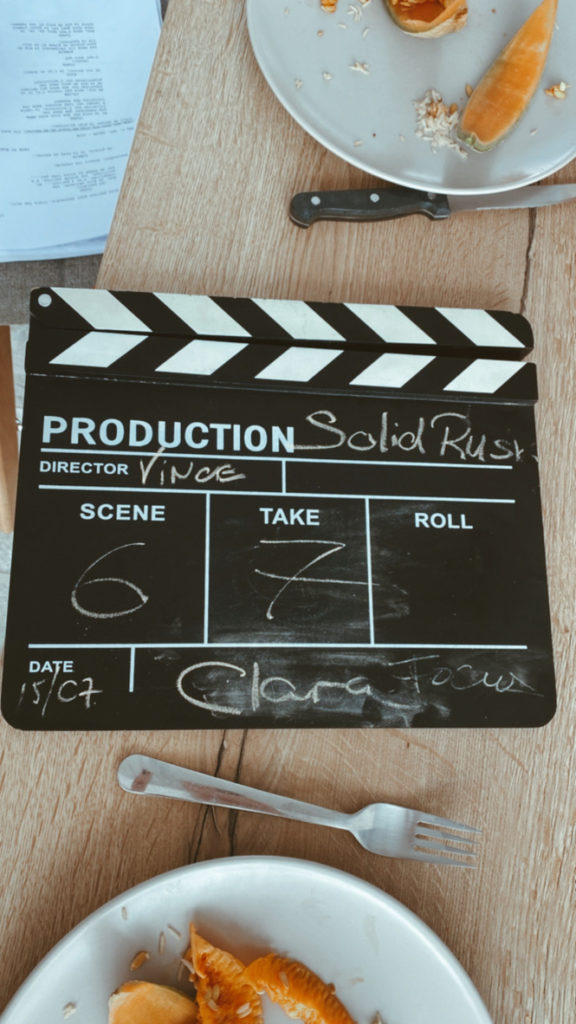
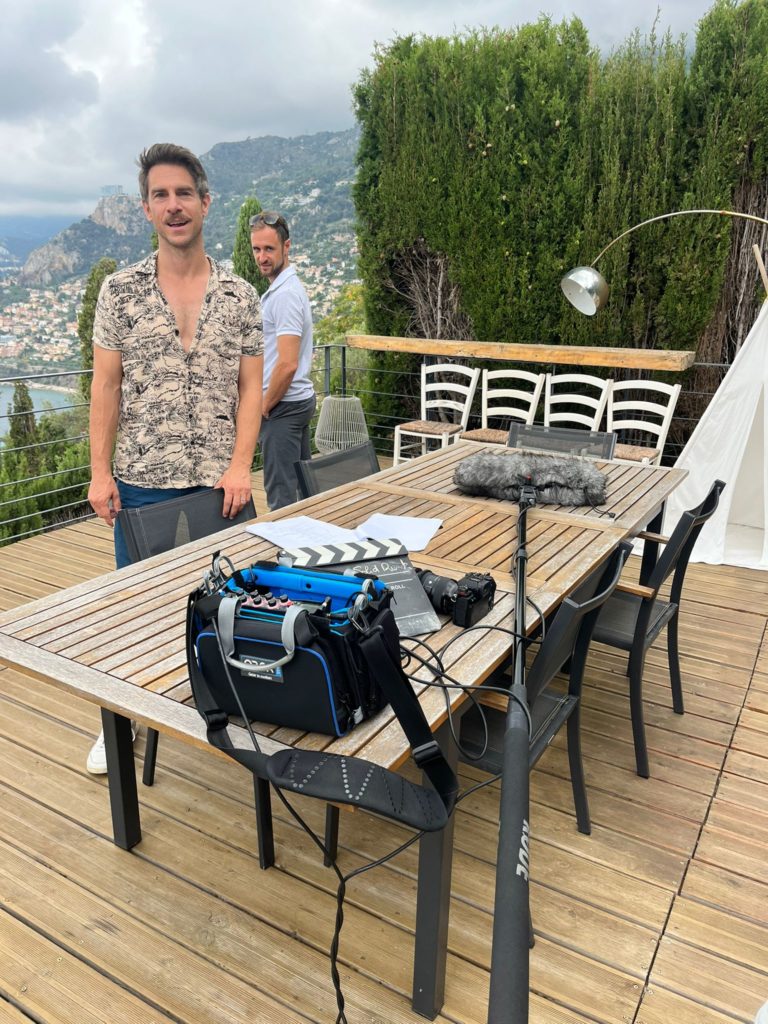
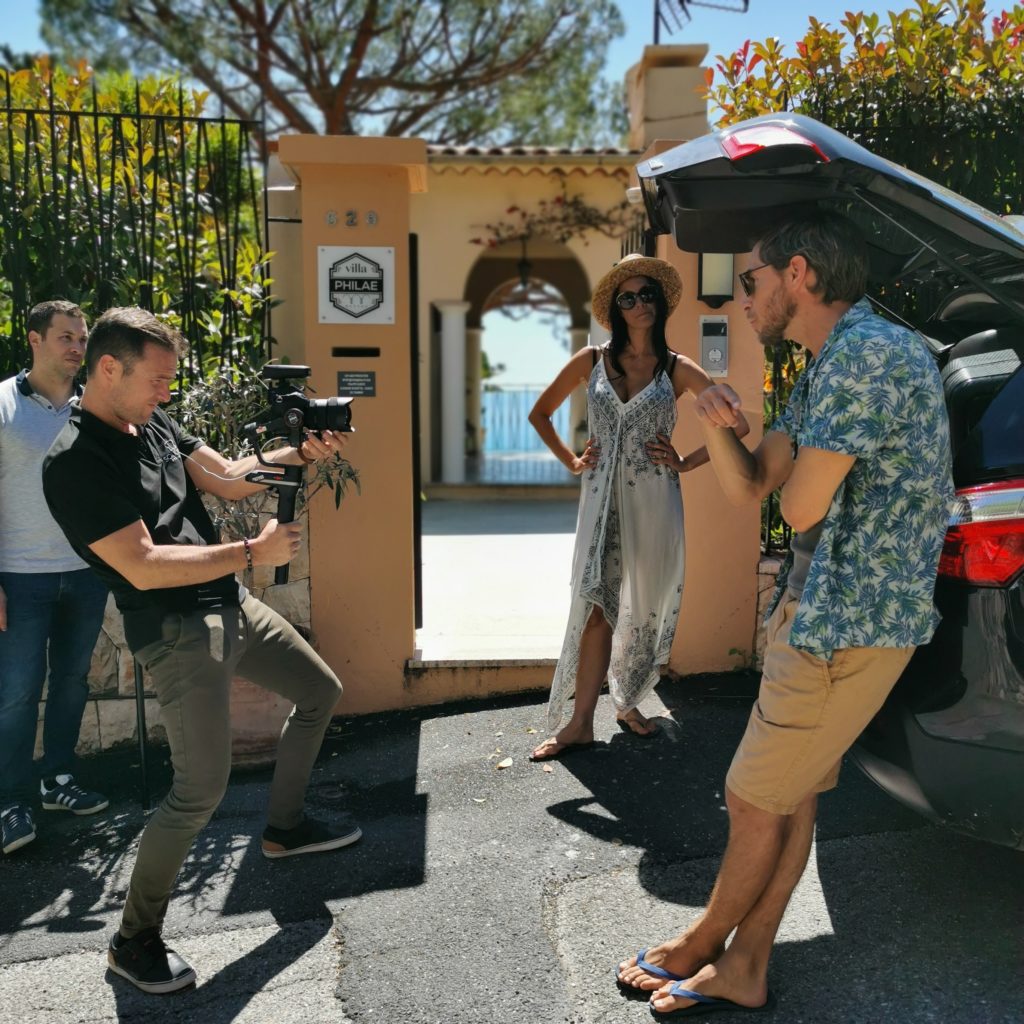
During filming
Before shooting begins, we take the time to explain to the various actors and extras, as well as to the client, what’s going to happen in a team briefing on location. This final briefing will enable everyone to know the order in which the shots will be shot, and thus ensure optimal organization during the shoot.
During the shoot, Solid Rusk Production videographers are responsible for following the pre-established script as closely as possible. But the videographer or the customer may have new creative ideas on the day, and things may have to be changed due to weather or logistical constraints. Our videographers know how to adapt and take creative liberties. To ensure the best possible result, several different shots are filmed, allowing us to have several back-ups and make the final artistic decision at the editing stage. It’s better to have too many shots than too few. There’s nothing more frustrating for an editor than not having enough material to enjoy and render a beautiful project.
The on-site videographers will make sure that the client validates each and every scene so that shooting can continue. For this purpose, an external monitor is connected to the camera so that each shot can be validated directly with the customer.
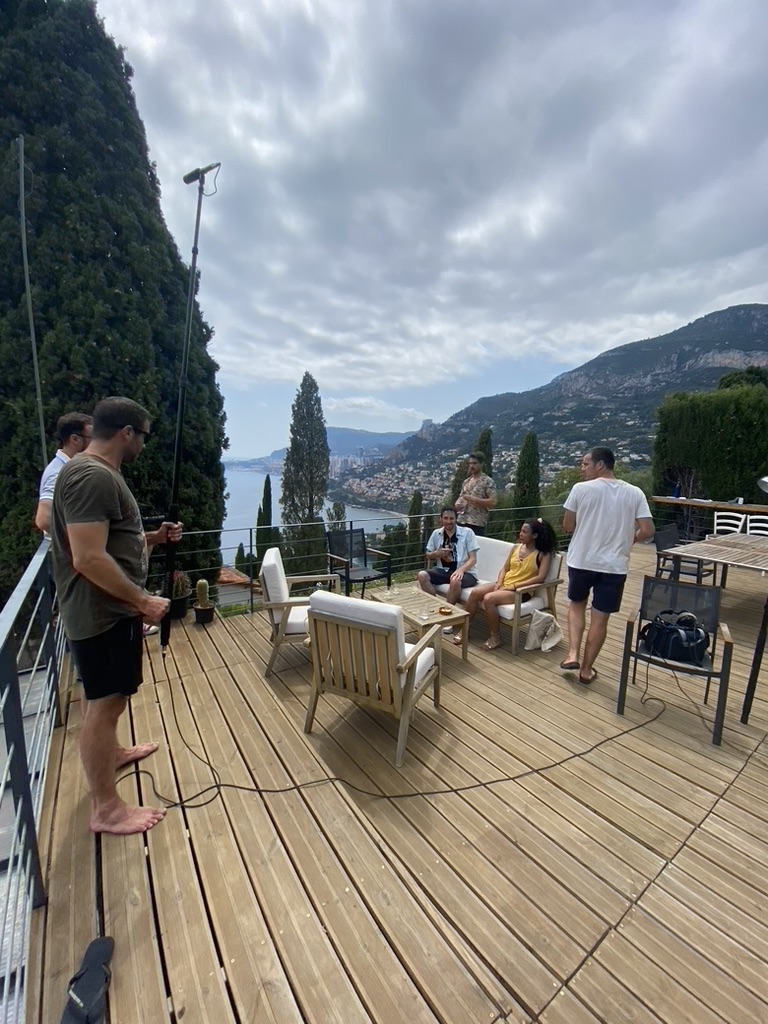
Short film “Je suis passé à côté” – Directed by Vincent Ronsse / Produced by Solid Rusk Production
Moments of conviviality
Once the clock strikes twelve, the film crew, collaborators and extras usually get together for a meal (pizza, food delivery or restaurant lunch) provided by Solid Rusk production, to save everyone time and have a good time between takes!
And don’t forget the coffee break, and the Breton four-quarter for a snack! After all, there’s no Solid Rusk shoot without a pound cake!
Editing a backstage video for Horus Pharma. The actors, who were also employees of this company, enjoyed seeing the final rendering, but also the missteps.
post-production
Once filming is complete, it’s time to edit your corporate film. This post-production work is of the utmost importance, since it’s a real artistic task. Give the same rushes to 10 different editors, and you’ll get 10 unique projects!
The first step is to de-render, i.e. to select the best takes. This is followed by pre-editing and editing. Next, the video is dressed up with animated graphics in line with the customer’s graphic charter, a voice-over, subtitles, etc. Sound is then integrated, matched to the images and sound levels adjusted.
The final stage is color grading, a process that improves the aesthetic quality of your film by adjusting color and other aspects of the image, such as contrast, saturation, brightness and so on. Images filmed indoors and outdoors do not render the same color, so you need to harmonize the colorimetry of all shots to gain in aesthetic appeal.
This sublimated image will give your corporate film a cinematic touch.
To optimize all this, the shoot must be well prepared, giving the videographers the peace of mind they need to produce your film in the best possible conditions. Discover our tips for preparing your corporate film shoot.
Solid Rusk Production is a video production agency based in the south of France. Our videographers are experts in image and video capture for professionals based in Cannes, Nice, Monaco, Menton and Avignon.
Article written by Emeline l Prête-moi ta plume
